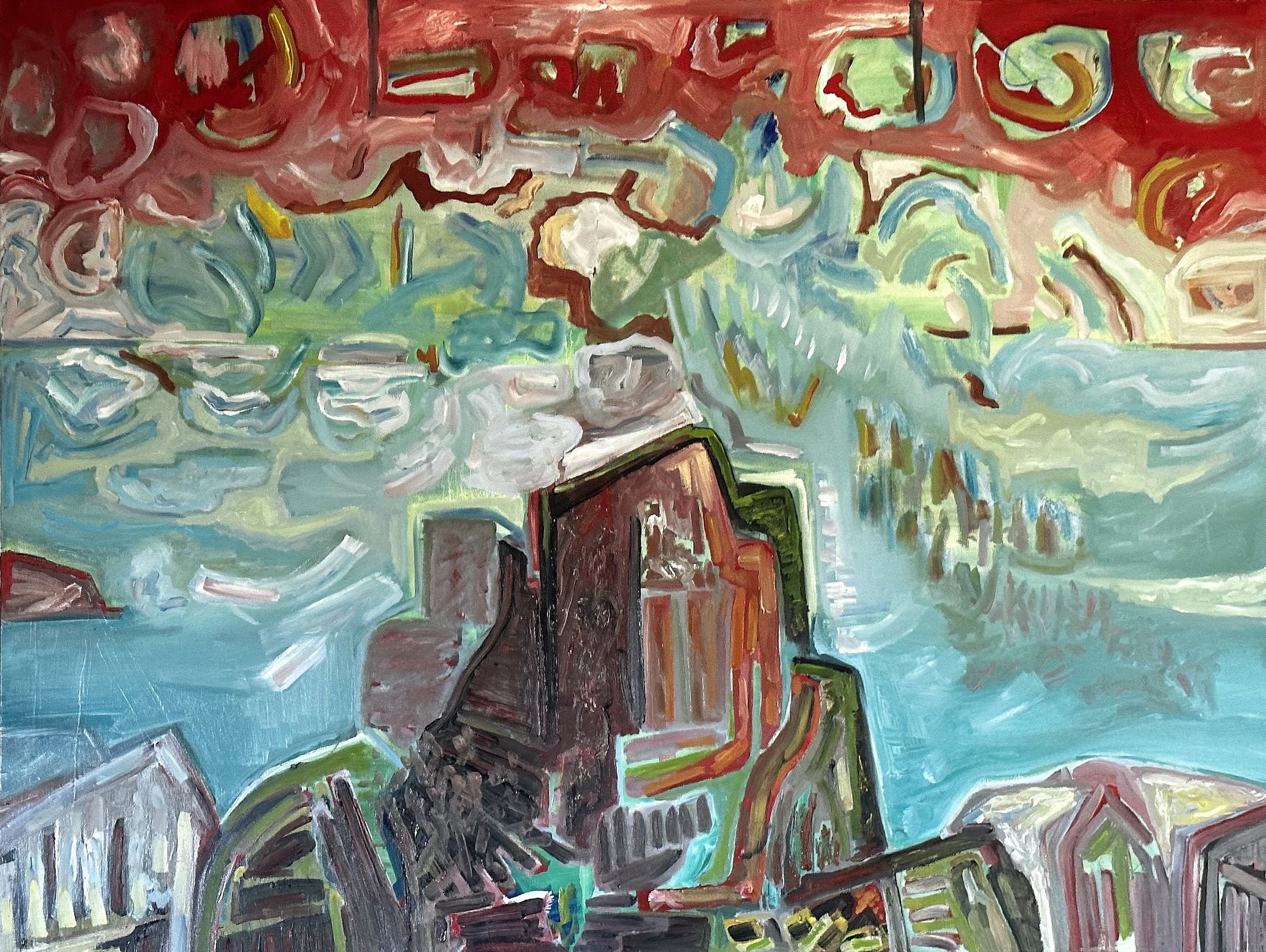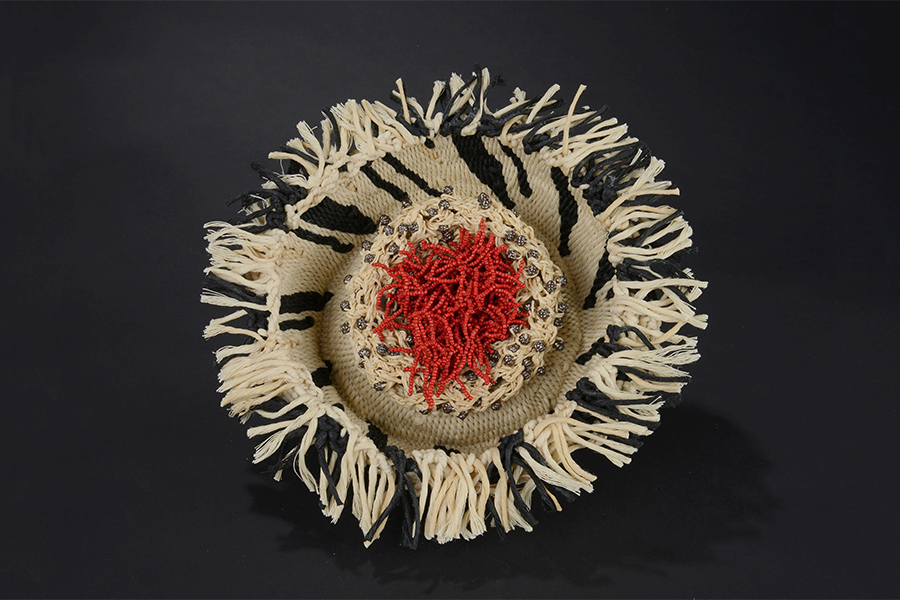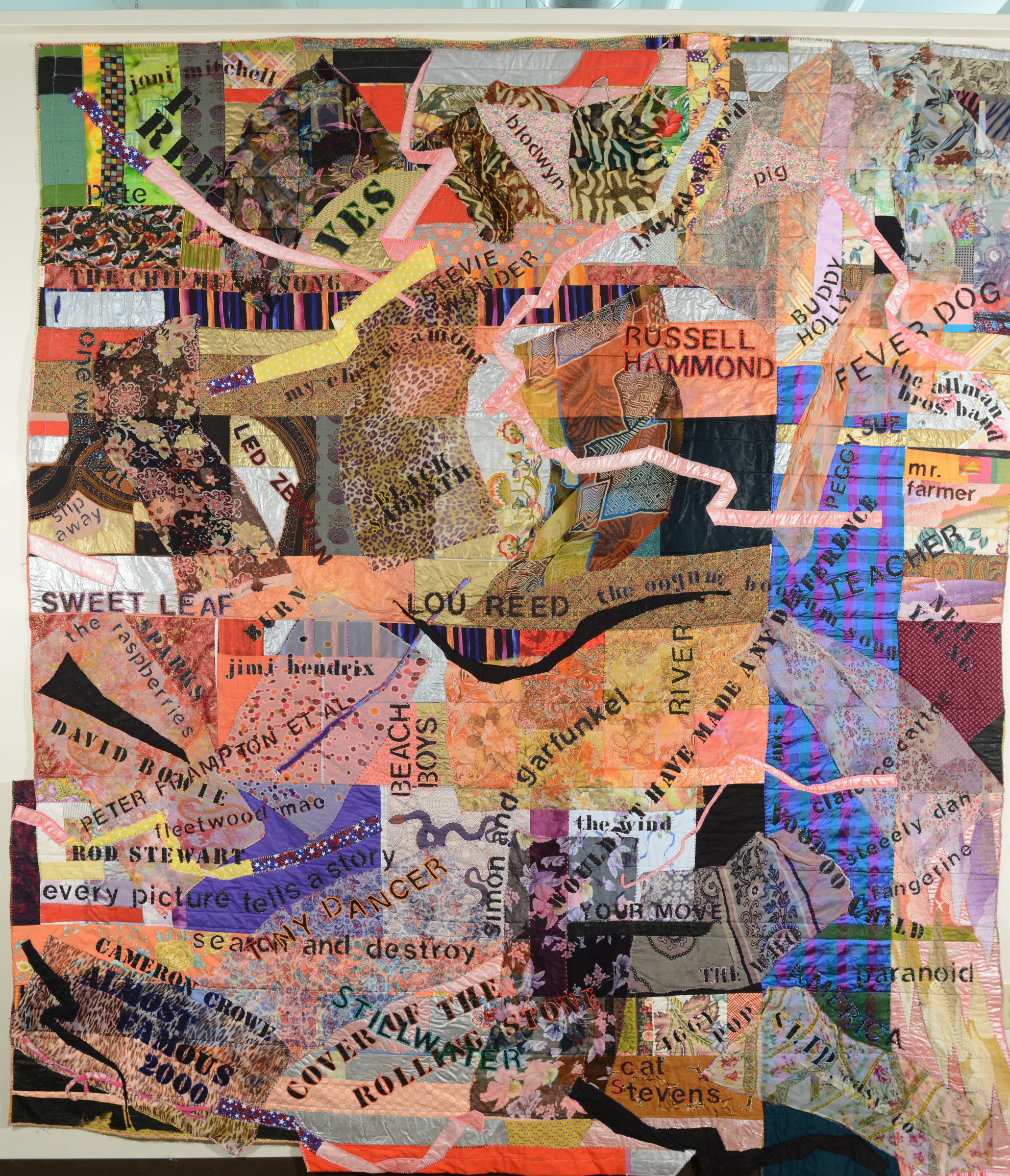About Sun Smith-Foret
I’m a professional studio artist, teacher and independent curator. I have been formally active in textile construction, quilts, sculpture, functional and amuletic objects since finishing graduate school at Washington University.
My undergraduate work is in art history, art and architecture. I became interested in quilting while studying design, drawing, painting and printmaking as a graduate student. I noticed the importance of line, color, composition, pattern, and especially the complexities and elegant solutions in bending the grid which occurs in traditional African American improvisational quilts. I was drawn to solutions and inventions that enliven basic grid structure and saw the possibility of linking abstract scenarios, social and cultural content from film and filmmakers into my surface design. This connection resulted in a body of work focused on quilts inspired by that linkage to global cinema. As a practicing psychotherapist, I integrate all genres of film related to behavior and cultural impact, gender and social differences, family and other relationships.
The Riverwork Project is a monumental scale, panoramic textile artwork referencing human and water resources. It encompasses a visually vernacular architecture of thought about rivers and associations to water. Comprised of 300 feet of pliable sections of sewn, layered, hand-quilted, hand-stenciled and painted cloth, the work lies on the ground plane or hangs on walls. I conceived, designed and managed Riverwork to include and reflect our diverse population with participation across disciplines. More than 70 invited artists – female, male, elderly, young, black, white, student, professional, academics -- each contributed a small piece, suggesting new thought and insight.
The 3D amuletic sculptural work is a recent acquisition in my skill set and came from direct observation of the work of Jane Sauer, a former studio mate and decades-long friend and colleague. The work is sourced by an invitation for an outdoor installation at the Audubon Center at Riverlands in W. Alton, MO. The idea of nests as sign and symbol fit with my current exploration of new materials including flood wood (my home on the Mississippi River is in the floodplain), beads, and waxed linen. The basketry work is sculptural and reflects trans-tribal influences from contemporary and traditional global sources. The circular nature of the construction mirrors spiritual concerns leaning toward the transcendental.


